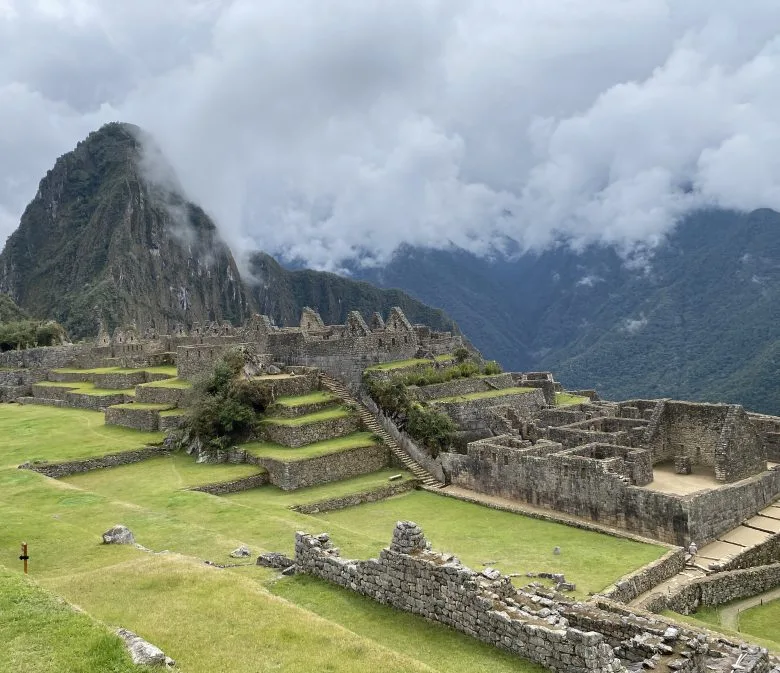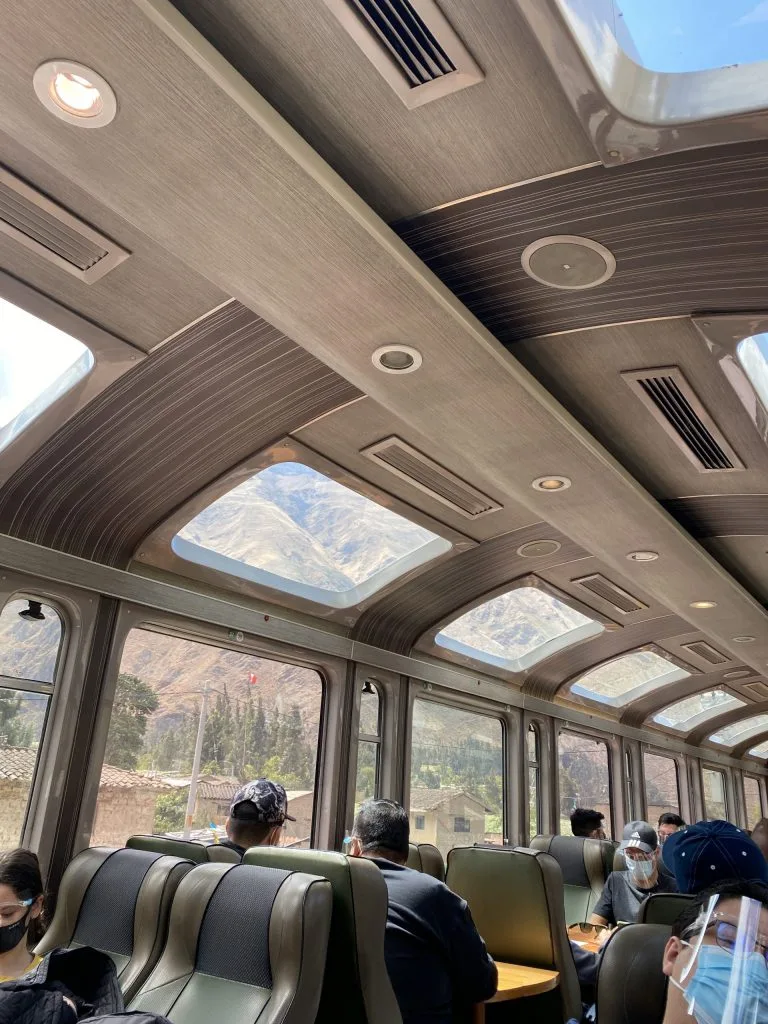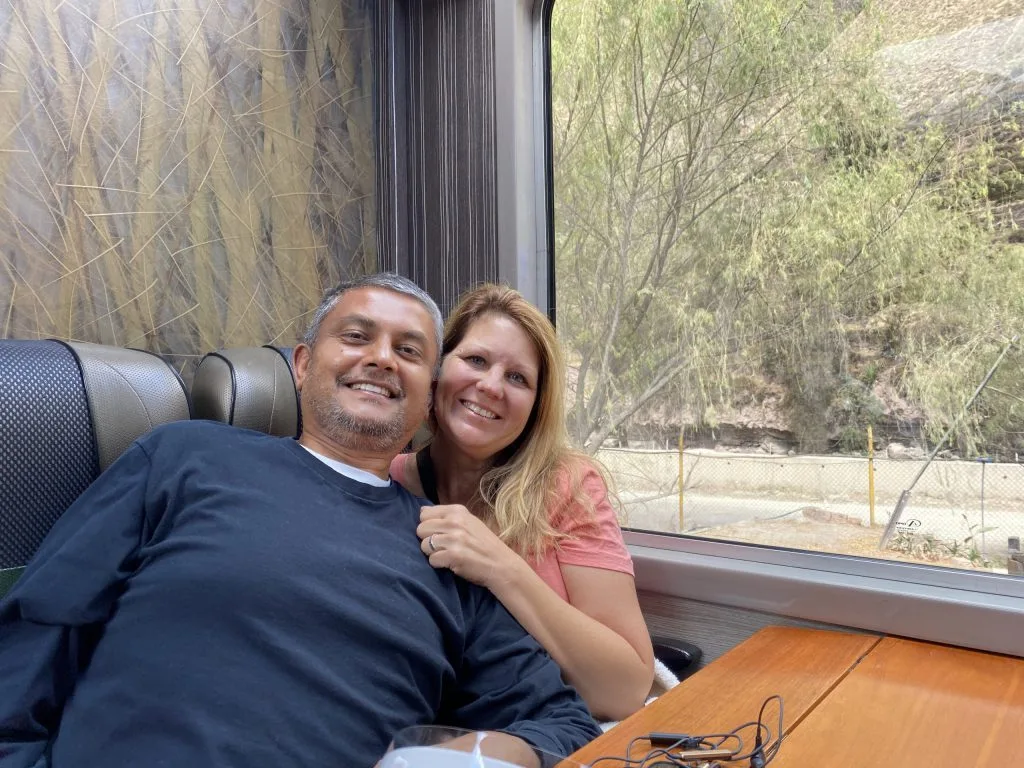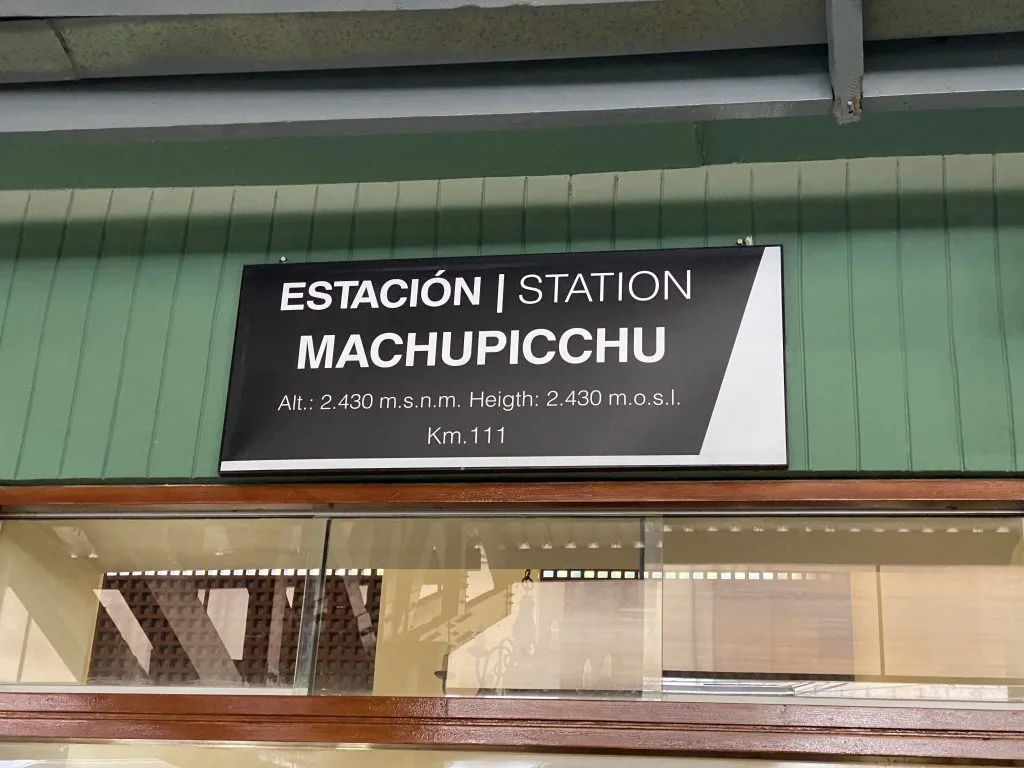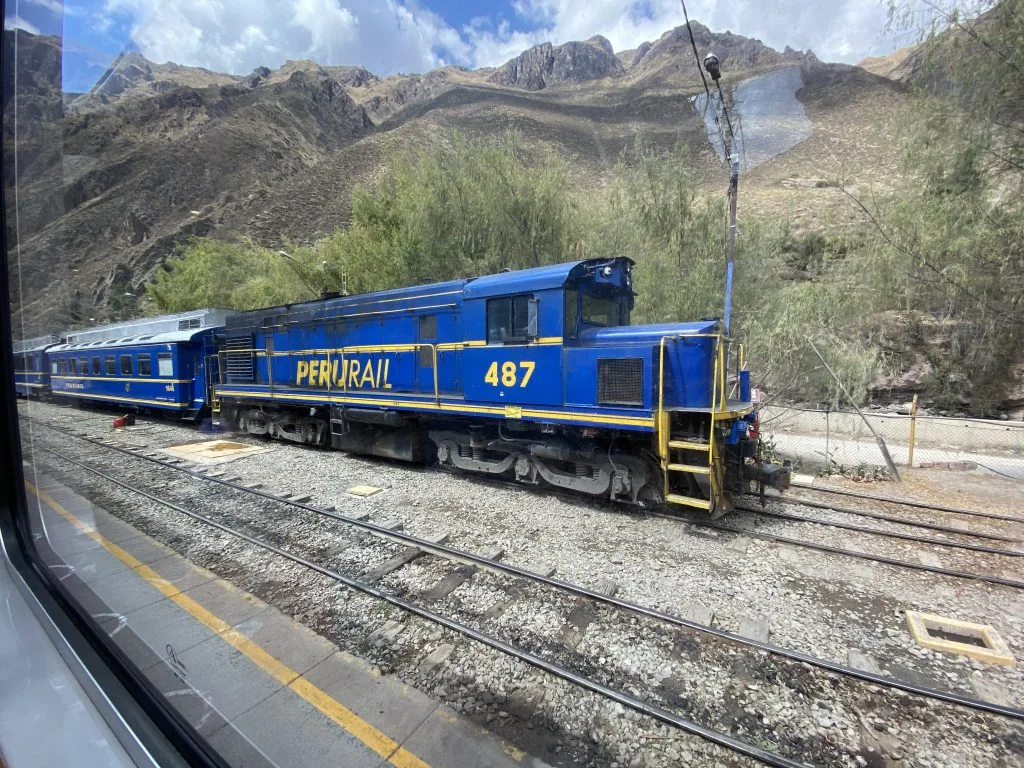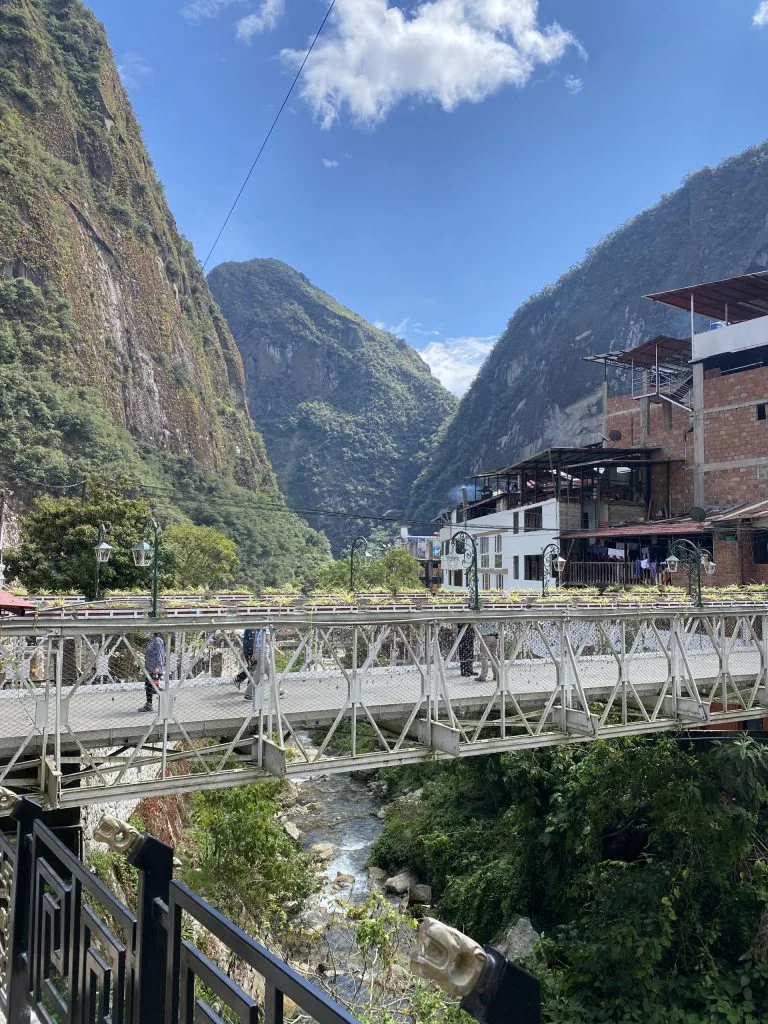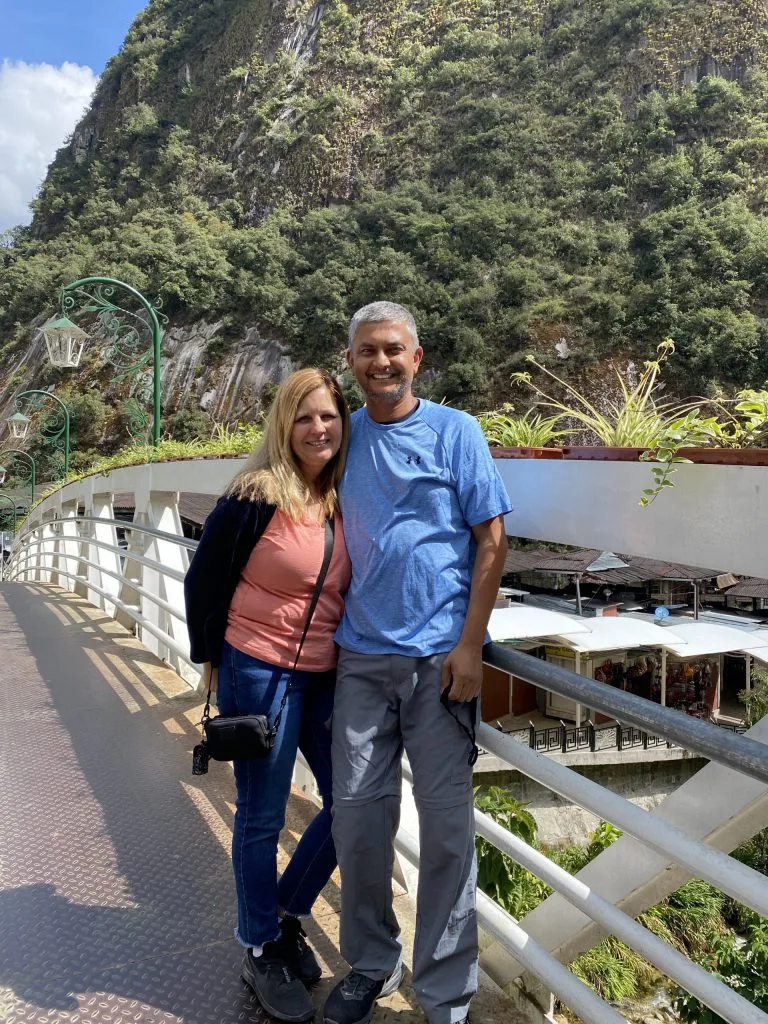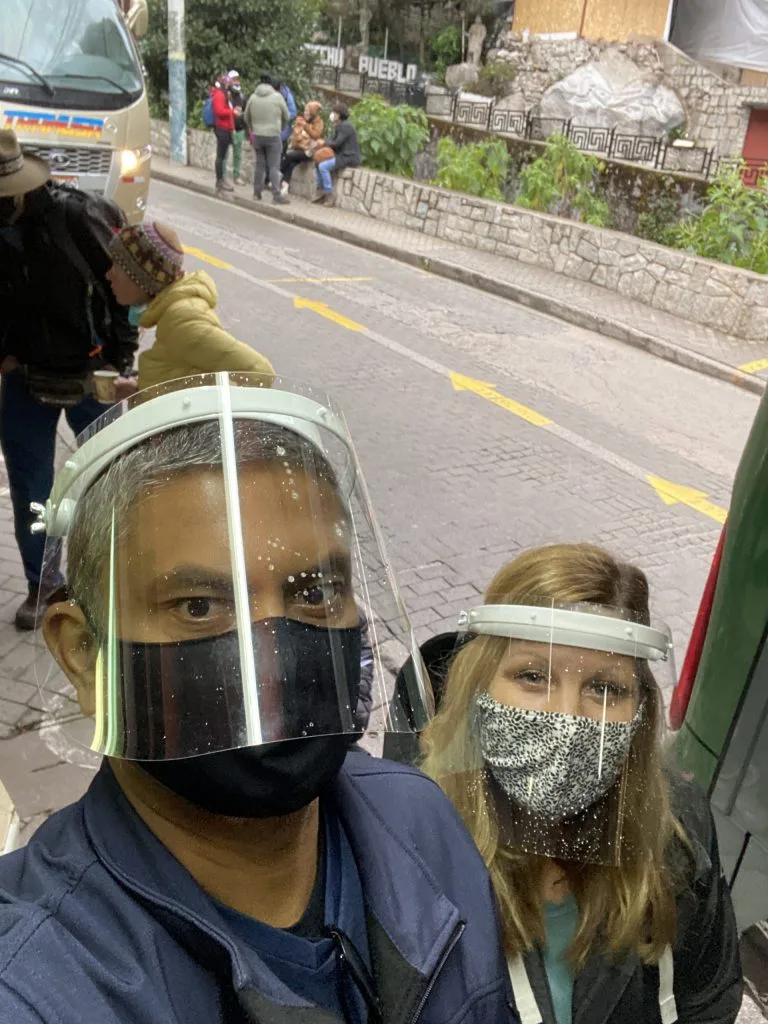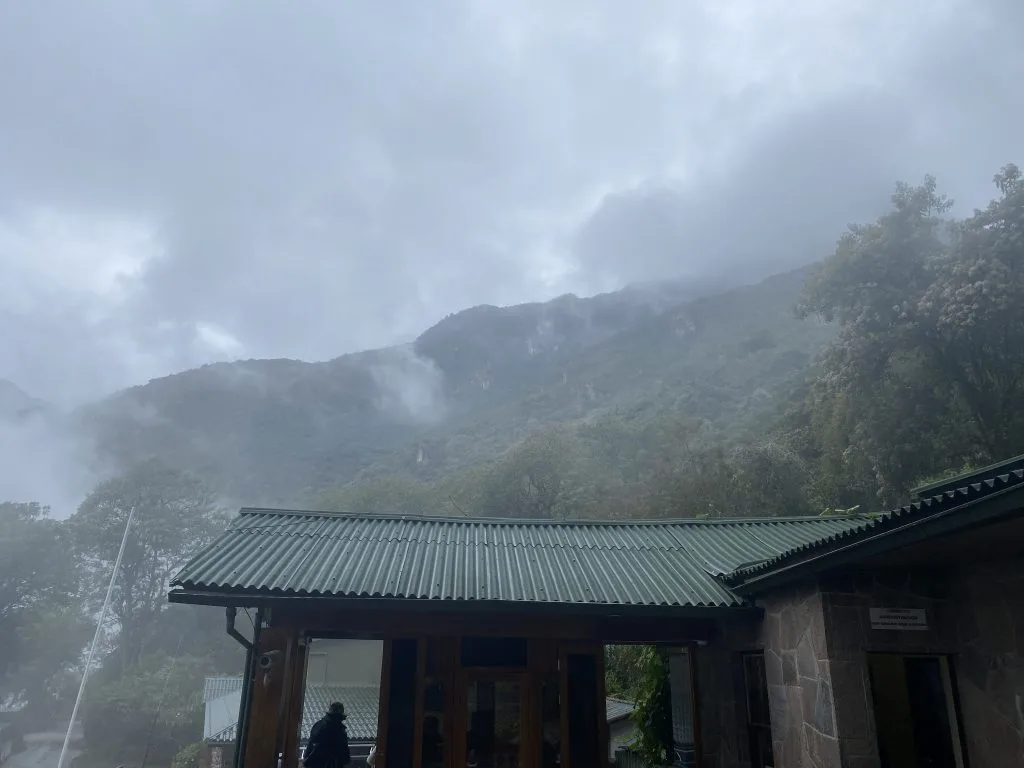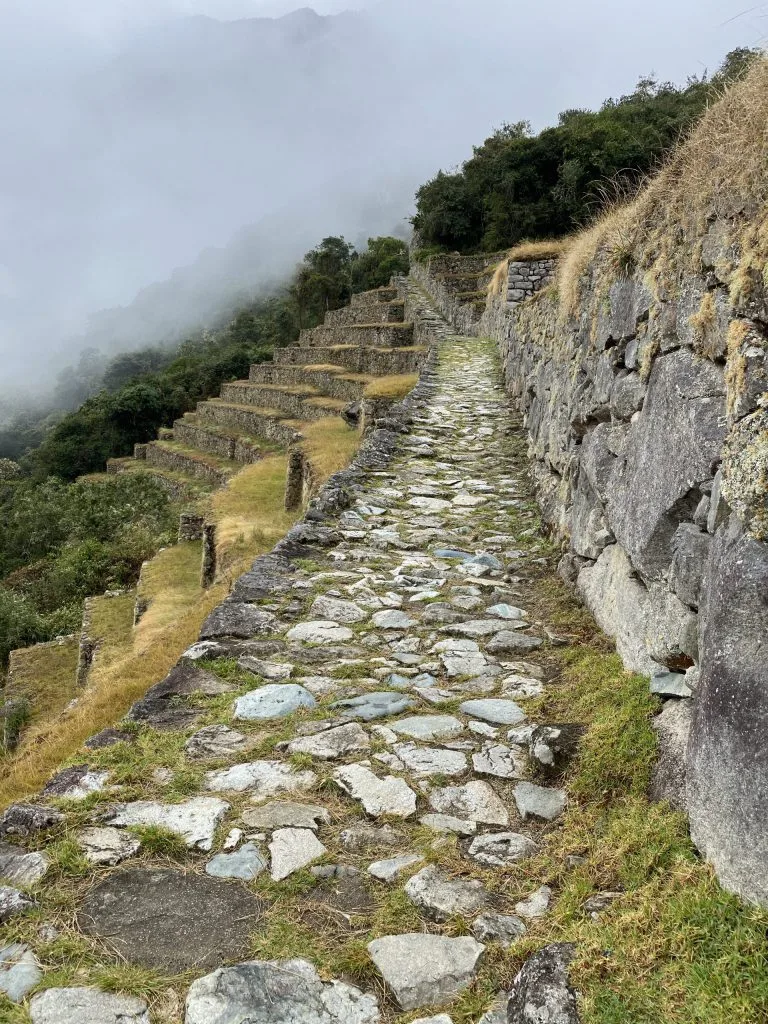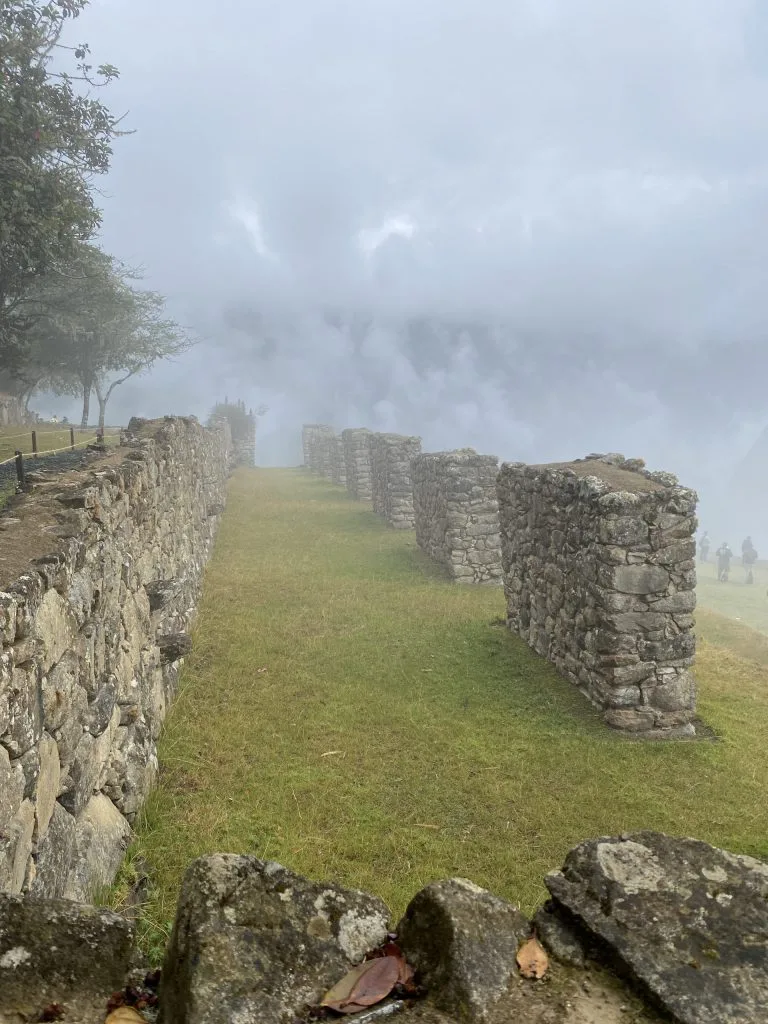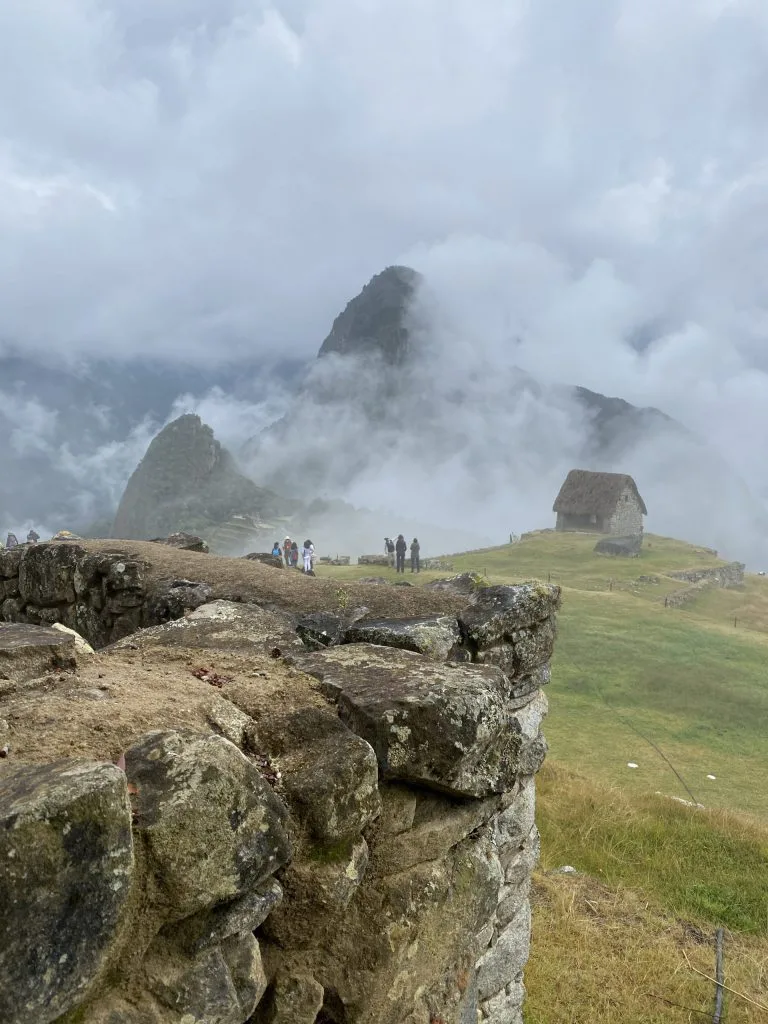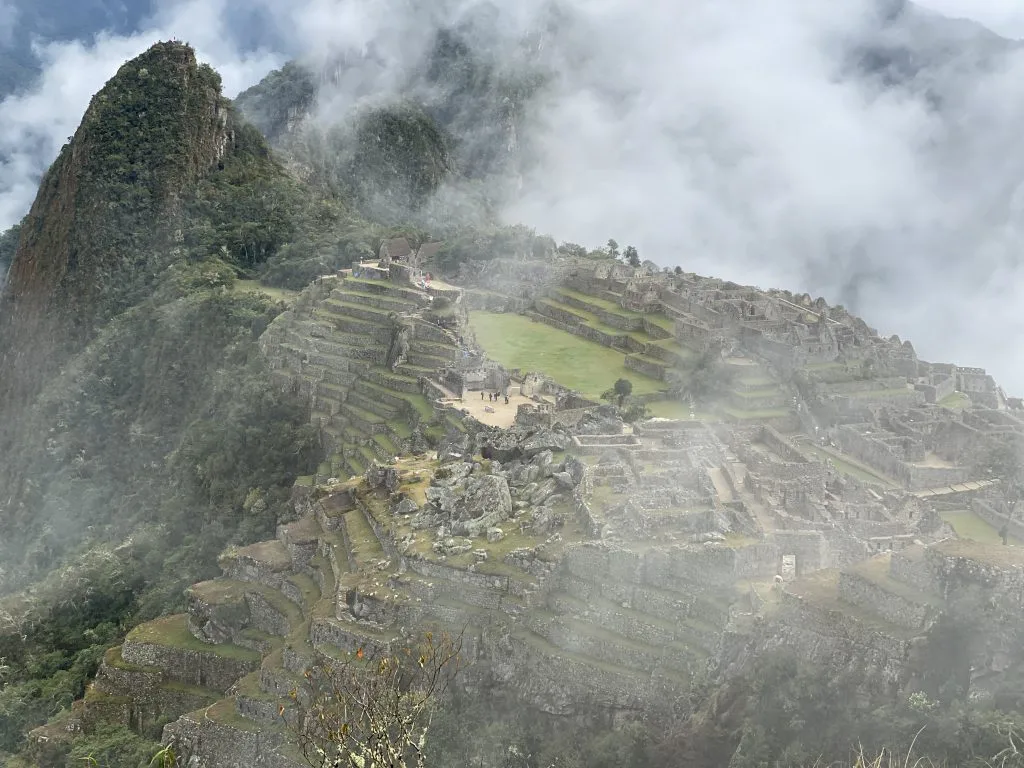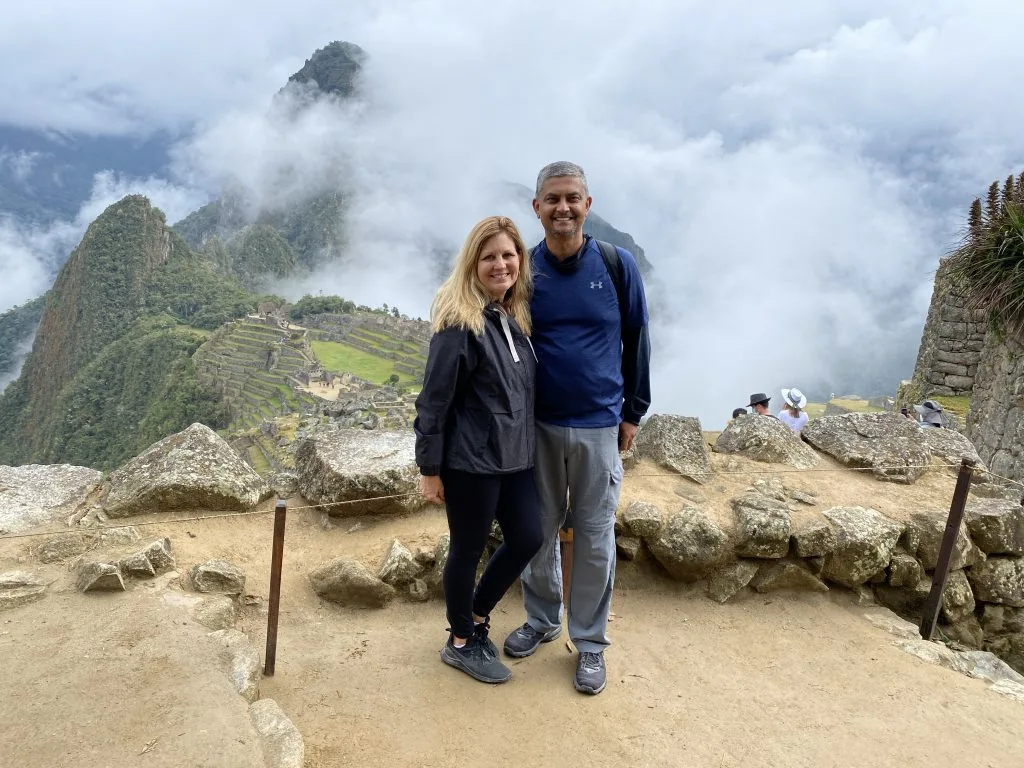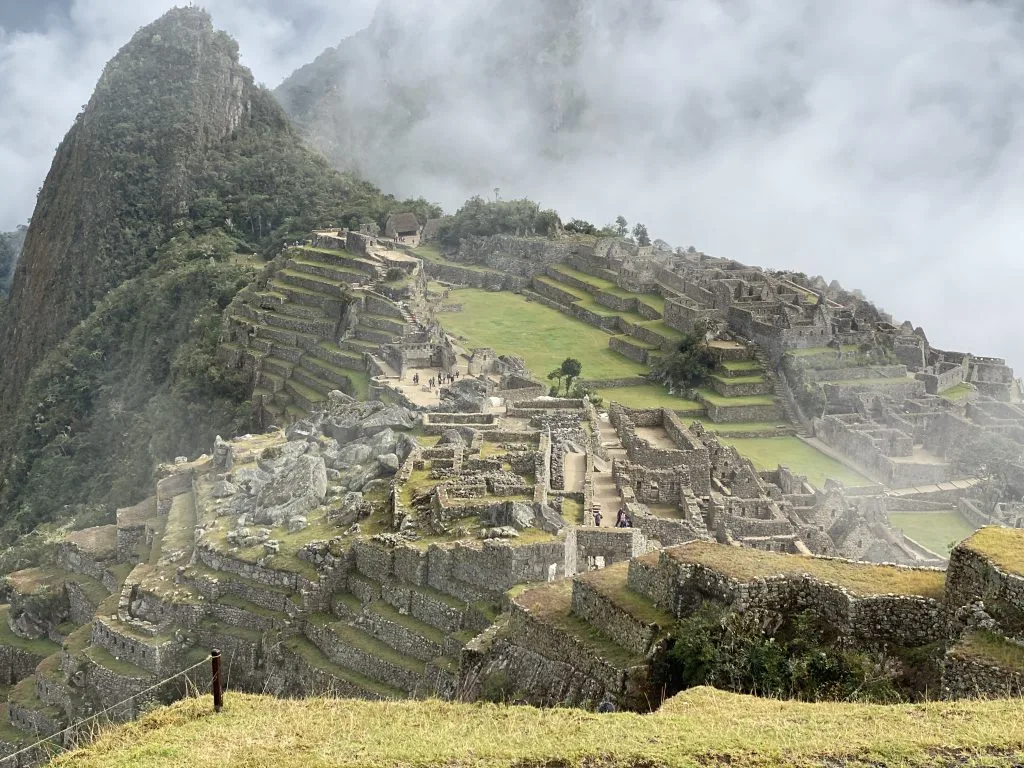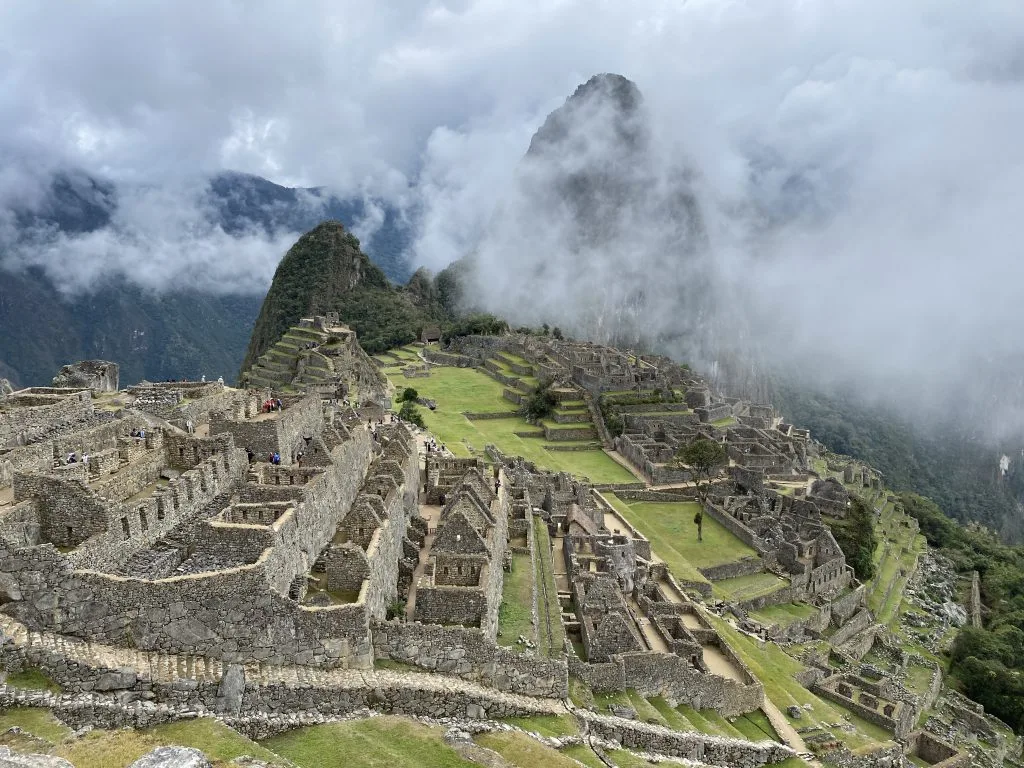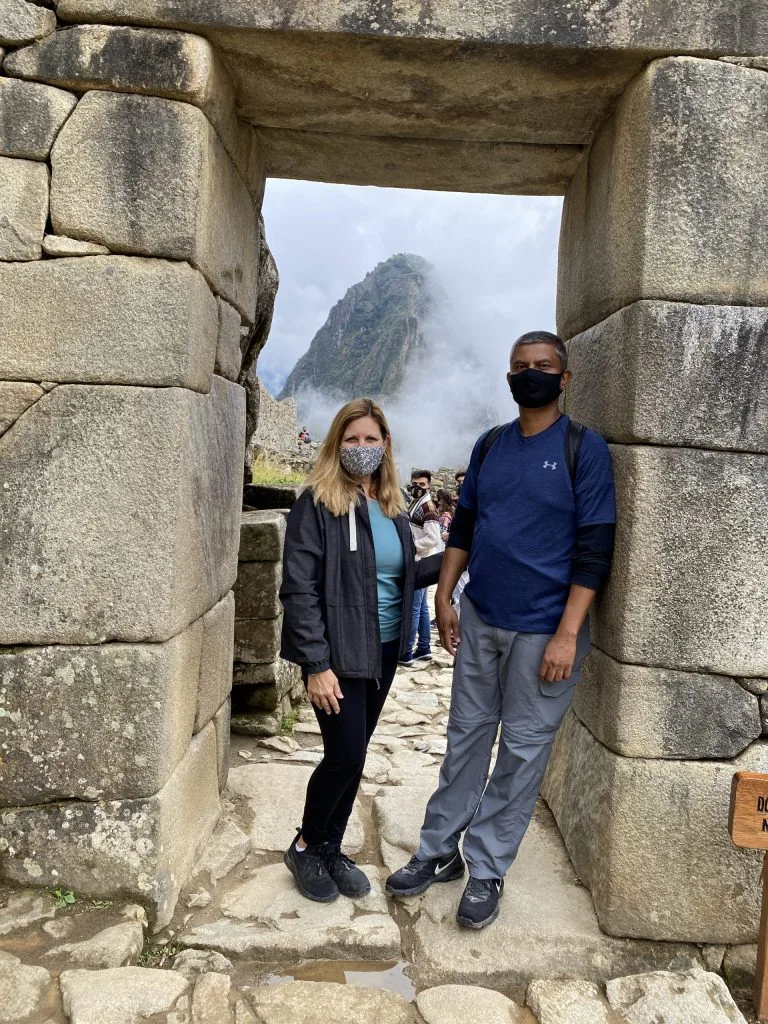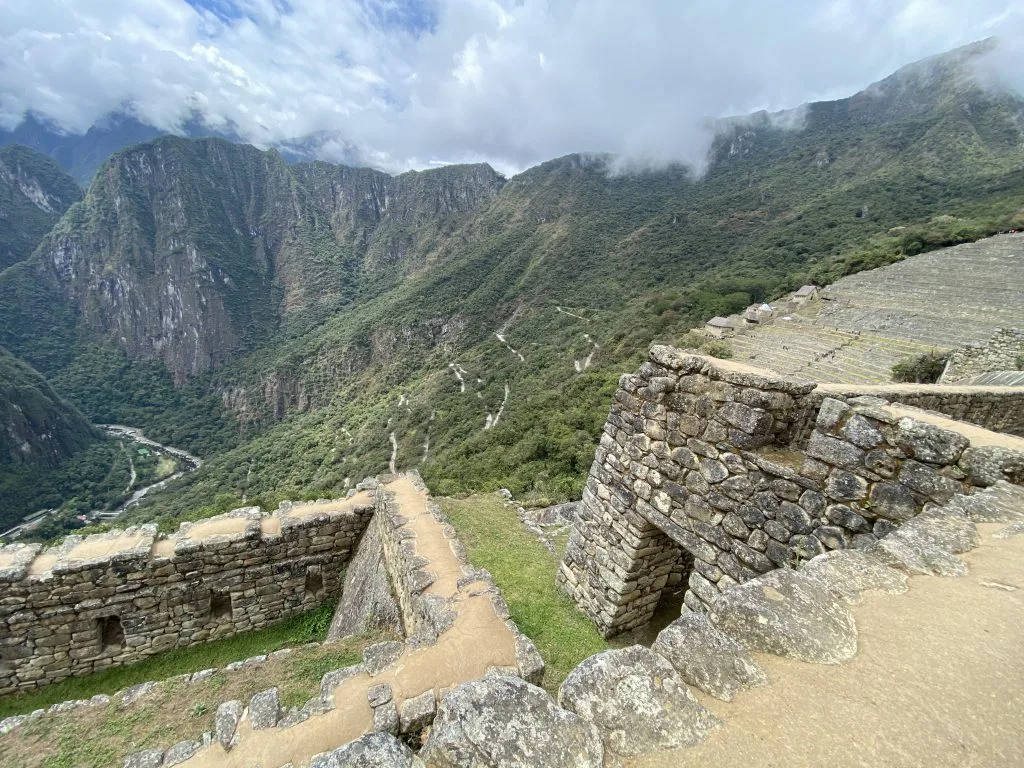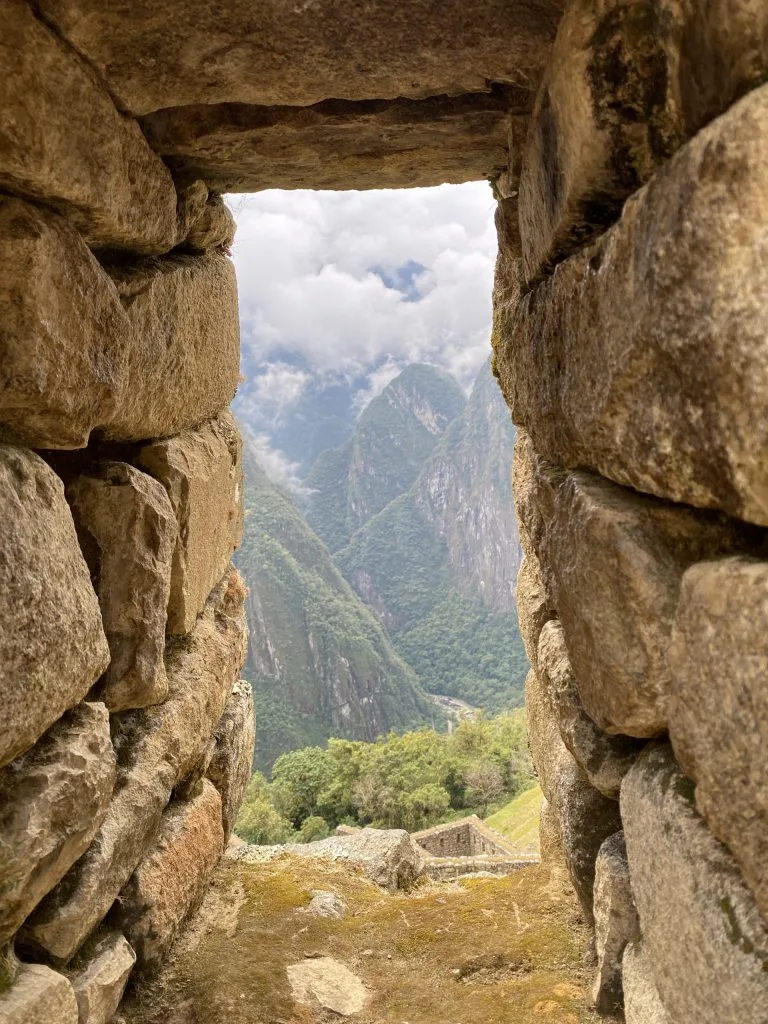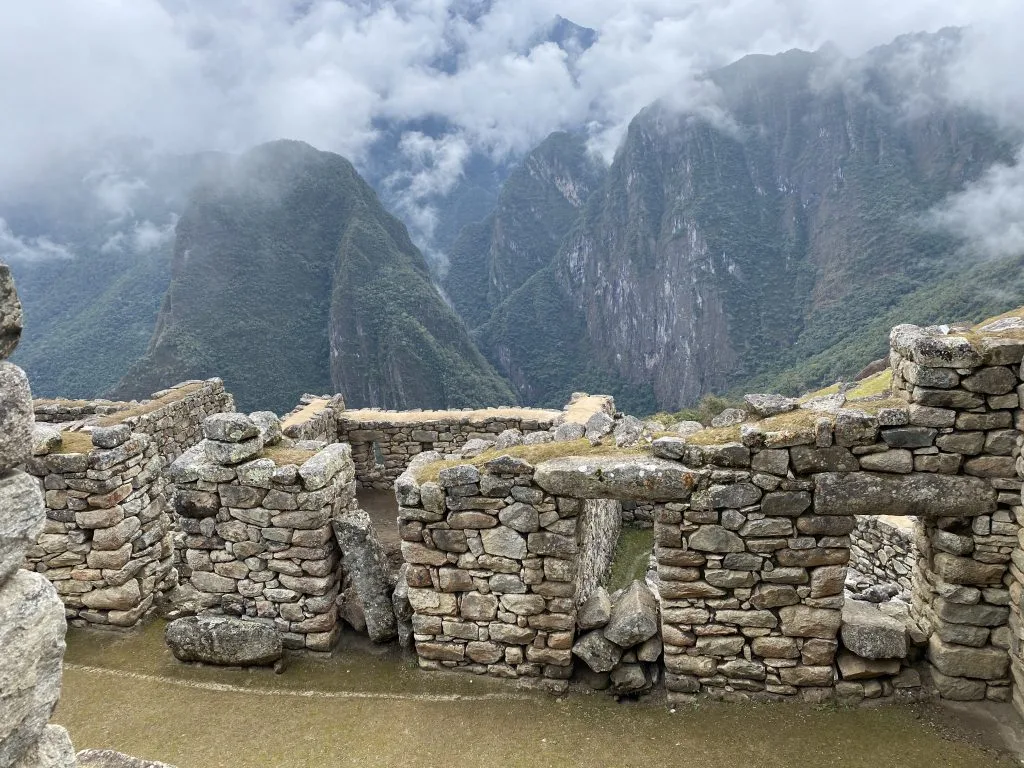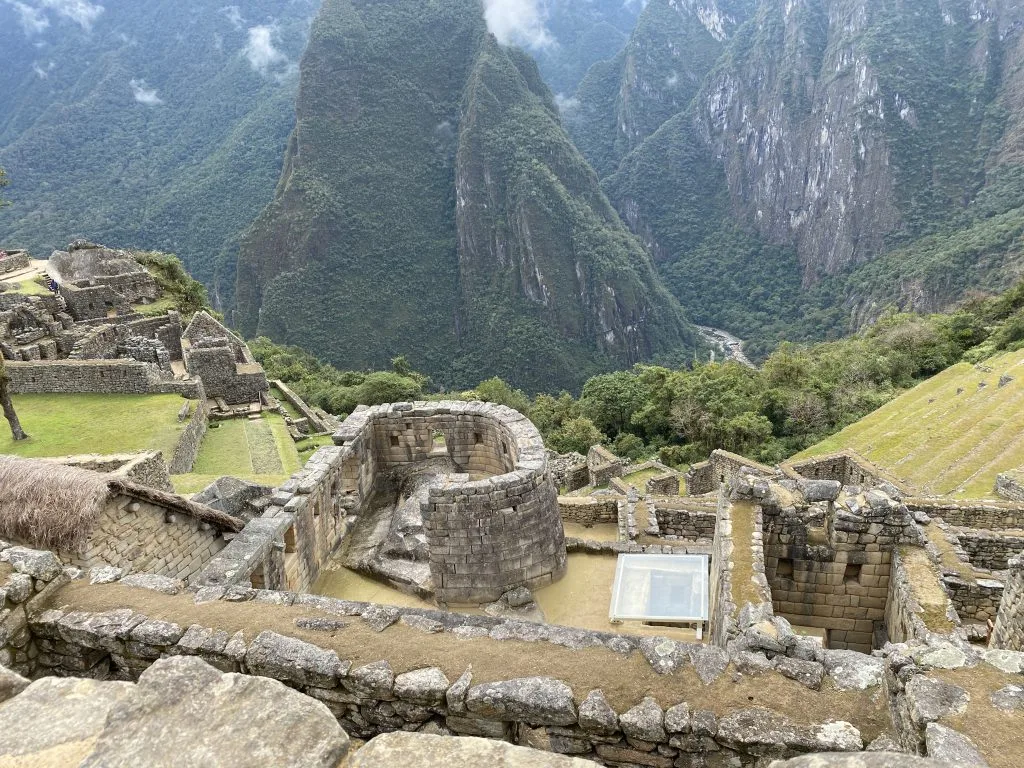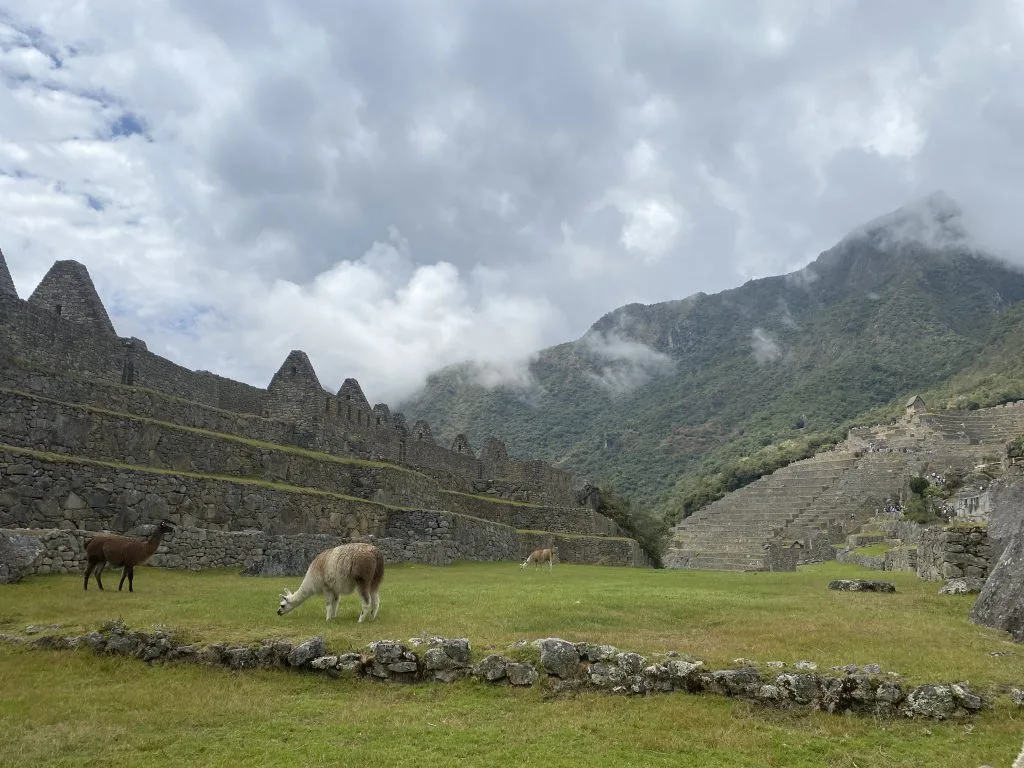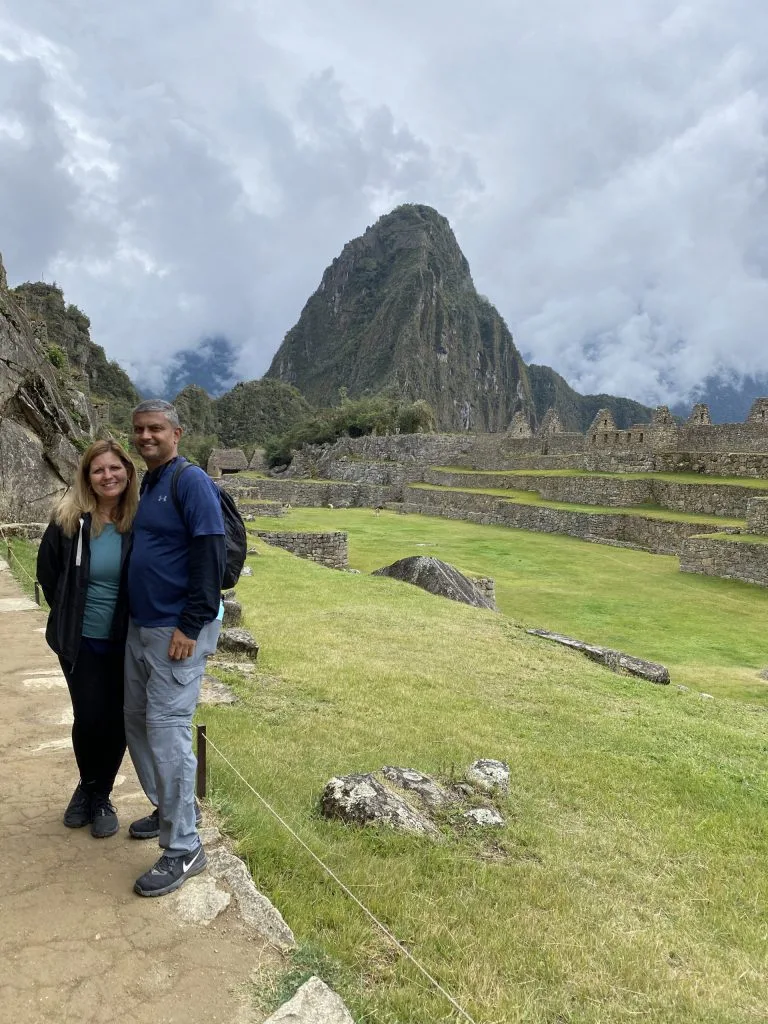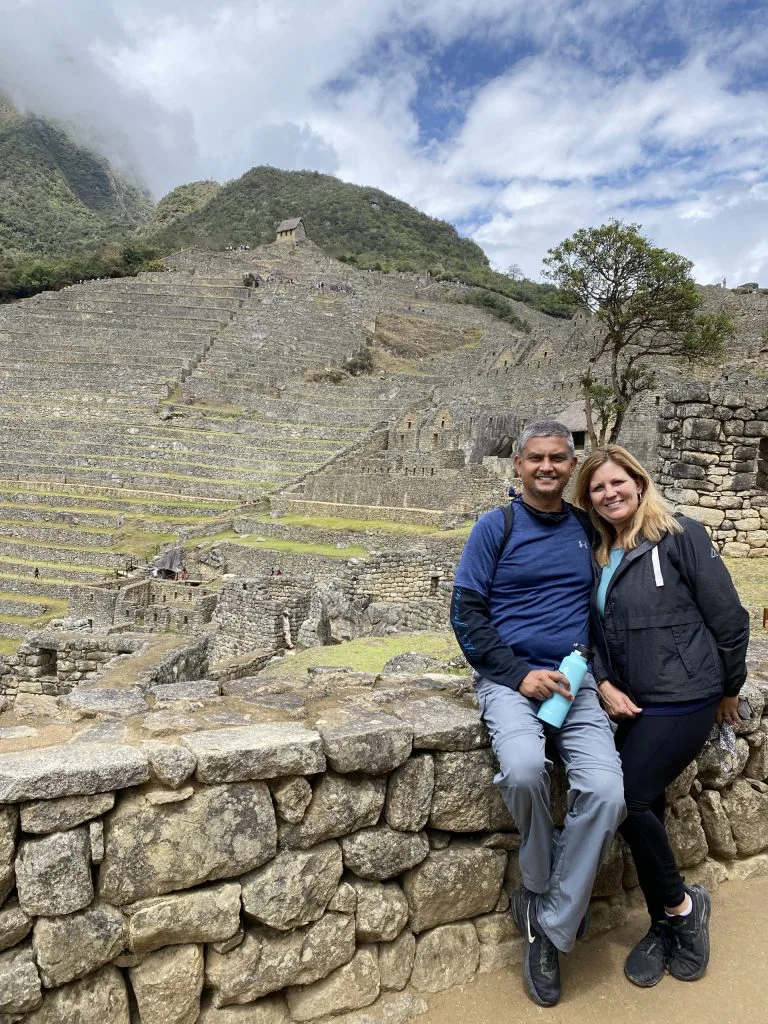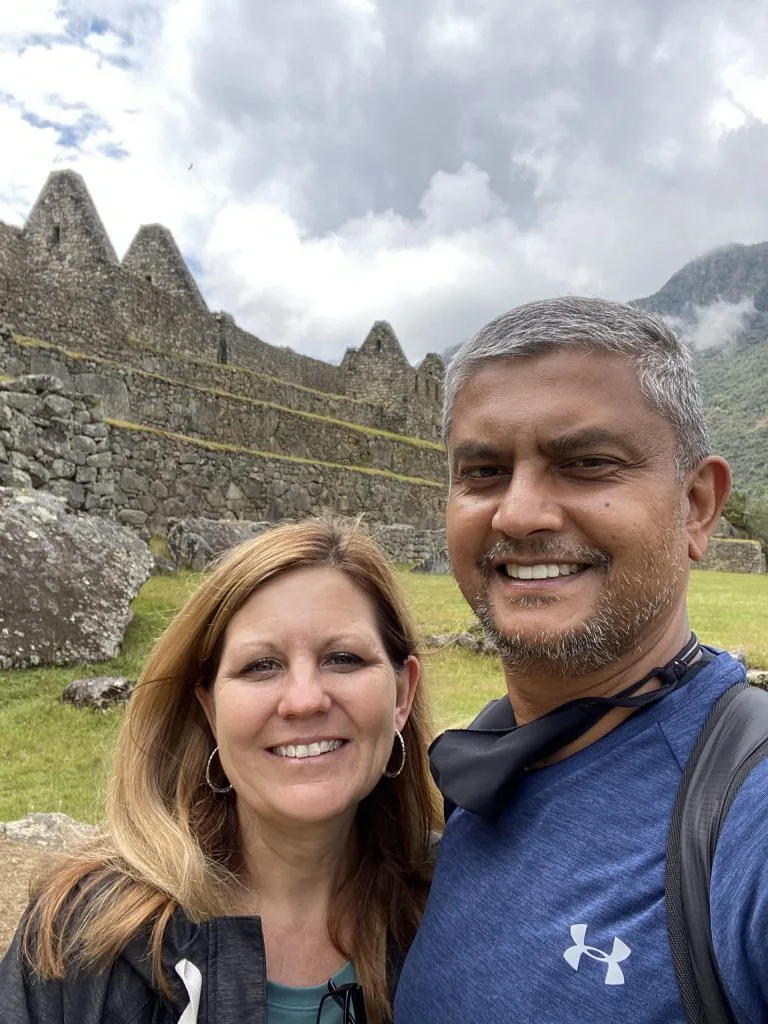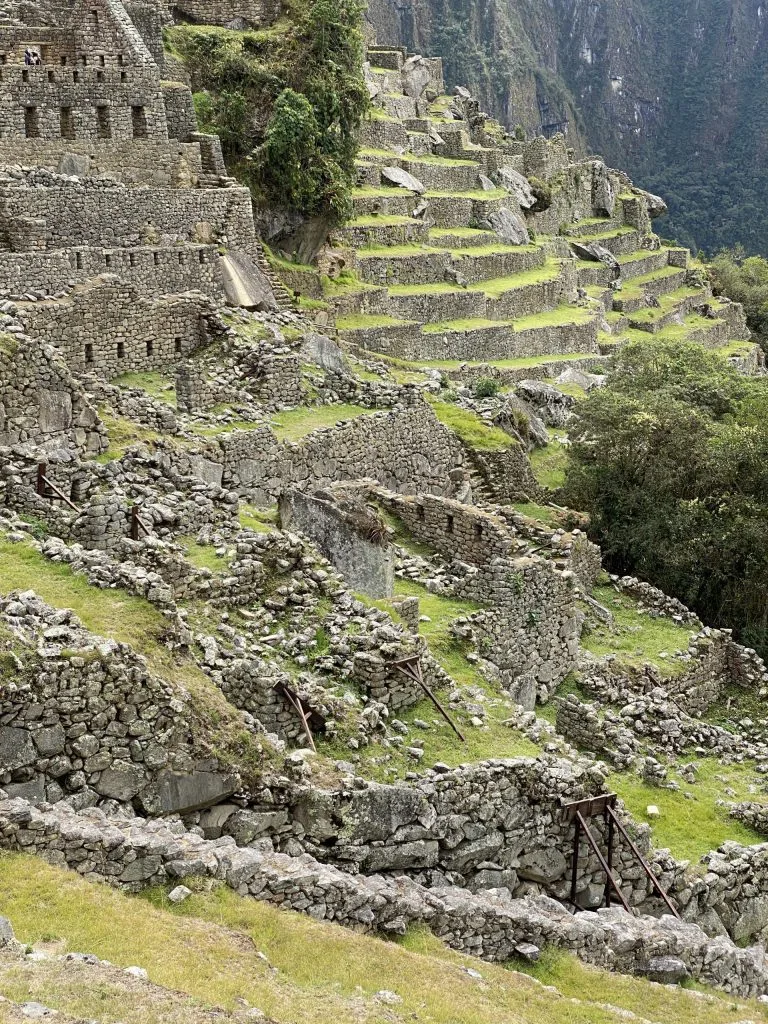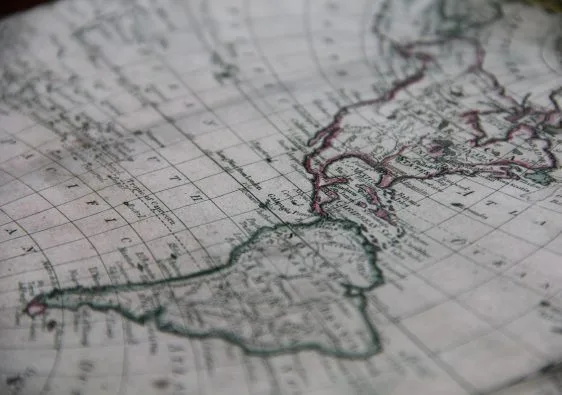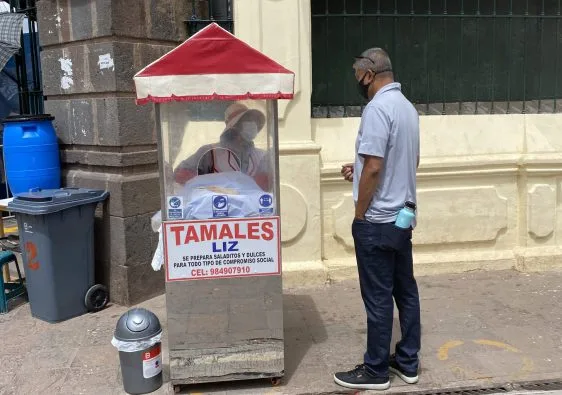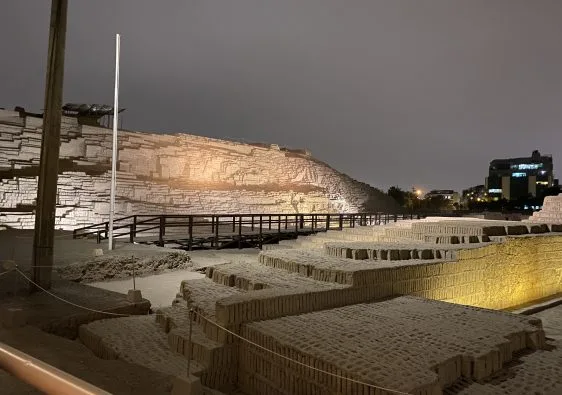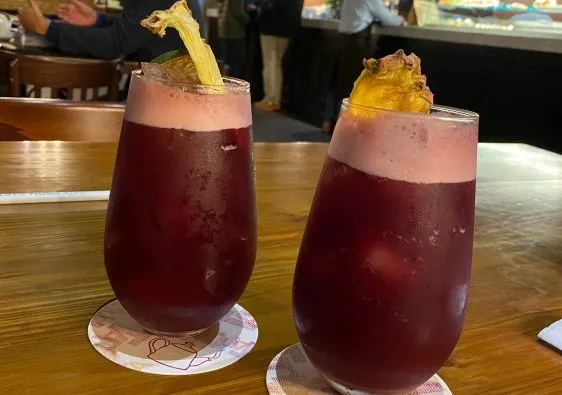On Sunday, we took an early train from Cusco to Aguas Calientes, the small town known as the gateway to Machu Picchu. Although we had to wear 2 masks and a face shield during the ride up, it was a small price to pay for what was at the end of this journey. The ride took four hours, and it we went from 12,000 ft elevation in Cusco, to just under 8,000 in Aguas Calientes. The ride was very picturesque along the Urubamba River, and we passed many small towns, and more Incan ruins. As we got closer to the mountain range the foliage changed, and it became more lush and green.
Once we got there, we toured the Aguas Calientes, which is definitely a tourist town. A good portion of the hotels and restaurants are still closed, because they do not have the number of tourists yet like they did pre-COVID. We stayed at the Inkaterra Resort, which was right along the river, and mere steps form teh train station, making it very convenient.
The next day, we got up early and met our guide, Wilfredo, who was going to take us up to Machu Picchu. We, along with hundreds of others, lined up to board the buses for the 20 minute ride up the mountain. It was foggy, but Wilfredo said that in a few hours, the fog will lift and it will be perfect. Once we got up to the site, we walked up another 20 minutes, along the actual Inca Trail, to the TOP.
As we waited for the fog to lift, Wilfredo gave us a history lesson. in 1911 Hiram Bingham, a full-time Yale professor and a part-time treasure hunter/explorer (sounds like Indiana Jones) found this amazing site only by happenstance. While teaching in Lima, he heard stories about a lost Incan City. He began traveling along the Urubamba River, asking locals if they knew of such a place. He finally found someone who did and took him and his interpreter up to the top. When he first walked onto the site, it had three separate families living on the grounds, and majority of the ruins were covered with overgrown vegetations. He knew that this was a magnificent find, and went back home to the US, where he got funded and sponsored by National Geographic and Kodak, to go back to the site and begin excavating the grounds. There have been theories over the past 100 years about what Machu Picchu was used for, and today’s historians believe it was a ‘getaway palace’ for the Incan ruler Pachacuti as well as a place where the top astronomers, historians and weavers lived and taught others about their knowledge and crafts.
As we made our way into the citadel itself, we saw the huge stones that were already up o the mountain top, and how they quarried rocks on one side of the mountain and built around the existing large stones. They had three temples, several smaller homes for servants, the royal palace, and the sections where the teachers and students lived. To think that they built this site over 800 years ago, and that it was only discovered 100 years ago makes it more magical and amazing.
Today, only llamas live up here, and 4000 people visit it per day. There are certain areas which are blocked and you can only go in one way and follow the route through. But, our guide said that we came at a good time, with not too many tourists. Going up and down the stone steps was not the easiest, but it was a mesmerizing day, and it will be one that will live in our memories forever.
Once we completed our awe-inspiring day, we went back to our hotel, relaxed, had our last meal at Aguas Calientes and got ready to leave the next morning to our next destination – Urubamba.

